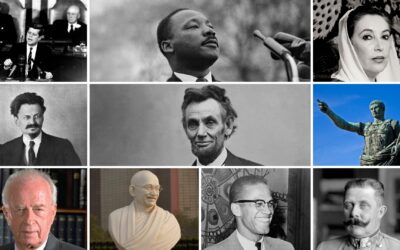In the annals of human history, few scientific endeavors have had as profound an impact as the Manhattan Project. This monumental undertaking, whose true purpose was shrouded in secrecy, changed the course of World War II and, in the process, fundamentally reshaped the world. This article aims to elucidate the origins, implementation, and legacy of the Manhattan Project, shedding light on its role as a game-changer in the tumultuous theater of global politics.
The Manhattan Project’s inception was no accidental happenstance; it was a product of necessity. As the 1930s faded into the 1940s, a chilling realization began to crystallize in the minds of the world’s leading scientists. The discovery of nuclear fission in 1938 had opened a Pandora’s box. Harnessing this immense power could generate an explosive force far beyond anything humanity had ever witnessed.
However, it was the looming specter of Nazi Germany that truly ignited the Manhattan Project. Scientists, like Albert Einstein and Leo Szilard, alarmed at the prospect of Hitler’s regime building such a weapon, wrote a letter to President Franklin D. Roosevelt in 1939. They warned him of the catastrophic consequences should Germany develop an atomic bomb first.
Convinced by the urgency, Roosevelt initiated the Manhattan Project in 1942, a name derived from the project’s Manhattan Engineer District in New York, where the first administrative offices were located. The project’s singular goal was to develop an atomic bomb before the Axis Powers.
The project’s execution required unprecedented levels of collaboration. Over 130,000 people were involved, many unaware of the exact nature of their work. Major General Leslie Groves was the military leader of the project, while the scientific direction fell to J. Robert Oppenheimer. This unlikely pair, a hard-nosed military man and a brilliant, sensitive physicist, successfully drove the project forward, overcoming enormous technical and logistical hurdles.
The Manhattan Project involved several key sites across the United States, with the most famous ones being Oak Ridge, Los Alamos, and Hanford. Oak Ridge was a city built from scratch to enrich uranium, while Hanford produced plutonium. At Los Alamos, Oppenheimer and his team of scientists worked tirelessly to design and construct the bomb itself.
After years of relentless effort and billions of dollars, the Manhattan Project reached its apogee on July 16, 1945, with the successful detonation of “Trinity,” the world’s first atomic bomb, in the New Mexico desert. The sight of the mushroom cloud rising into the heavens was a chilling testament to humanity’s newfound capability for mass destruction. Barely a month later, the cities of Hiroshima and Nagasaki would witness the devastation wrought by atomic weaponry firsthand.
The Manhattan Project not only succeeded in ending World War II but left an indelible mark on human civilization. Its legacy is multifaceted, complex, and still very much relevant in our contemporary world.
On the positive side, it established the template for big science – large-scale, government-funded research projects. It demonstrated that a cooperative endeavor, uniting the best scientific minds and harnessing massive resources, could solve seemingly insurmountable problems. This model has since been applied to projects like the Human Genome Project and the International Space Station, pushing the boundaries of human knowledge.
However, the Manhattan Project also cast a long and menacing shadow, ushering in the Nuclear Age. Atomic weaponry’s immense destructive potential became a central factor in global geopolitics, leading to an arms race and decades of Cold War tension between the United States and the Soviet Union. This specter of nuclear warfare continues to hang over humanity, forcing us to grapple with the ethical implications of our technological prowess.
Moreover, the project had far-reaching effects on the scientific community. Many scientists involved, including Oppenheimer, grappled with the moral and ethical implications of their work, leading to a heightened sense of social responsibility within the scientific community.
The Manhattan Project was a catalyst for change, inextricably intertwined with the most transformative events of the 20th century. It demonstrated the astounding potential and terrifying pitfalls of human ingenuity and technological advancement. As we continue to explore the atomic realm and beyond, we would do well to remember the lessons of the Manhattan Project: that with great power comes not just great responsibility, but also the capacity for both great progress and great destruction.
We stand at a unique vantage point in history, capable of harnessing the atom’s power for either our salvation or our annihilation. It is our solemn duty to ensure that the legacy of the Manhattan Project guides us toward a future of peace and prosperity, a future where the atom’s power is harnessed for the betterment of humanity, not its destruction. The choice, as it was during the Manhattan Project, remains in our hands.
Keywords:
- Manhattan Project: The U.S. research and development project during World War II that produced the first nuclear weapons.
- Nuclear Fission: The process by which an atom’s nucleus splits into two or more smaller nuclei, along with some by-products.
- Albert Einstein: The renowned physicist who, alongside Leo Szilard, wrote a letter to President Franklin D. Roosevelt warning of potential German nuclear weapons.
- Leo Szilard: A physicist and inventor who co-wrote a letter with Einstein to President Roosevelt about the potential for atomic weapons.
- Franklin D. Roosevelt: The 32nd President of the United States who initiated the Manhattan Project.
- Major General Leslie Groves: The military leader of the Manhattan Project.
- J. Robert Oppenheimer: The scientific director of the Manhattan Project.
- Oak Ridge, Los Alamos, and Hanford: The key sites across the U.S. where the Manhattan Project was carried out.
- Trinity: The code name for the first detonation of a nuclear weapon, conducted by the United States on July 16, 1945.
- Nuclear Age: The period in history marked by mankind’s ability to harness atomic energy, beginning with the Manhattan Project.
Key Takeaways:
- The Manhattan Project was conceived out of necessity, with the aim of developing an atomic bomb before Nazi Germany.
- This project was a massive collaboration involving over 130,000 people and several key sites across the U.S.
- The successful detonation of the world’s first atomic bomb marked the start of the Nuclear Age.
- The Manhattan Project had significant impacts, both positive and negative. It established the blueprint for large-scale, government-funded research projects, yet it also ushered in an era of nuclear warfare and associated geopolitical tension.
- The ethical implications of the project have instigated a heightened sense of social responsibility within the scientific community.
The Nuclear Age Articles
Unraveling The Atomic Age: The Life and Legacy of J. Robert Oppenheimer
Unveiling the Atom: The Manhattan Project’s Deep Impact on World History
Albert Einstein: The Maverick Mind that Revolutionized Physics
Leo Szilard: The Atomic Pioneer’s Crusade for Peace
The Ethical Odyssey: Exploring Morality in the Course of Scientific Discovery
Los Alamos National Laboratory: Navigating the Past, Present, and Future of Scientific Innovation
The Cold War: Superpowers in the Ballet of Weaponry
Nuclear Proliferation: The Ever-Present Global Challenge
Interplay of Science and Politics: The Unsung Dance of Progress
Enrico Fermi: Mastermind Behind the Nuclear Age
From Atomic To Thermonuclear: A Detailed Examination of Nuclear Weapon Evolution
The Unforgotten Echoes: Hiroshima and Nagasaki’s Tale of Nuclear Devastation and Human Resilience
Living Under the Mushroom Cloud: The Psychological Impact of the Nuclear Age
Nuclear Fallout: Unmasking the Invisible Threat to Health and Environment
The Power and Peril of Nuclear Energy: A Balanced Perspective
Radiation Sickness: Unveiling the Hidden Costs of the Nuclear Age
From Darkness to Light: Lessons from Chernobyl and Fukushima
Deciphering the Nuclear Waste Conundrum: The Path Towards Sustainable Solutions
Guarding the World from Nuclear Threats: International Laws for Nuclear Disarmament
Journey to Peace: Unraveling the Path to Global Nuclear Disarmament
Culture Echoes of the Atomic Age: Artistic Narratives in the Nuclear Era










0 Comments